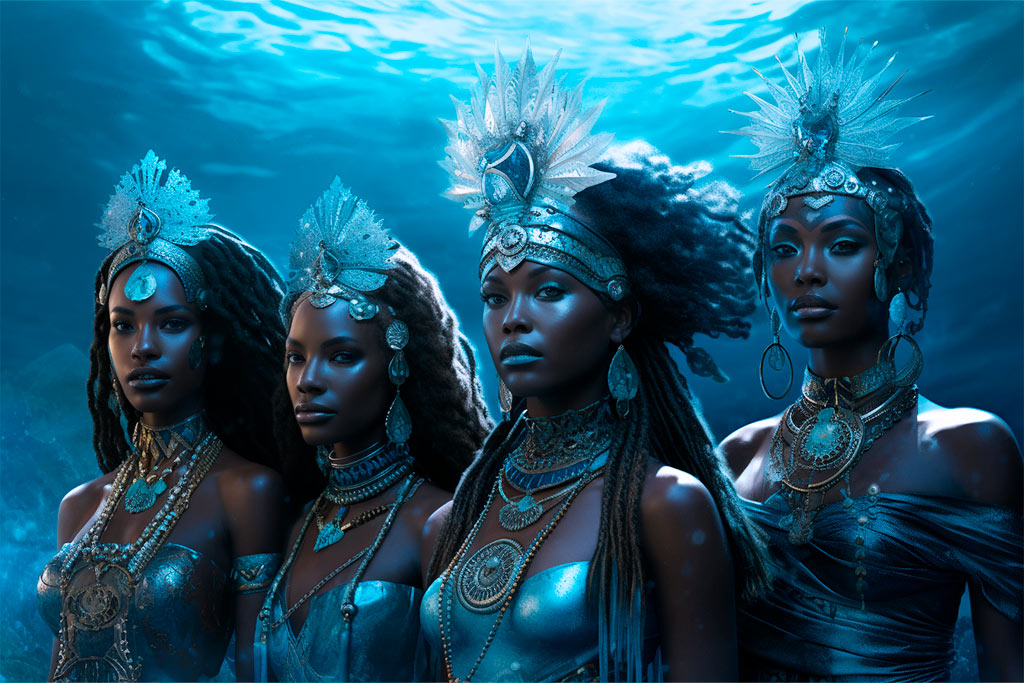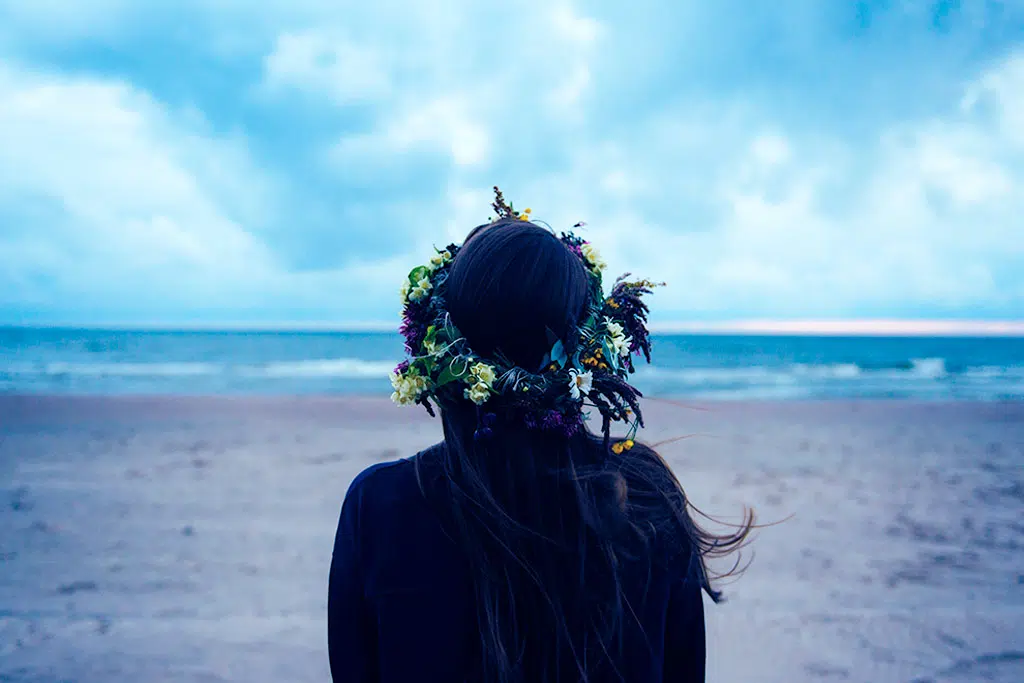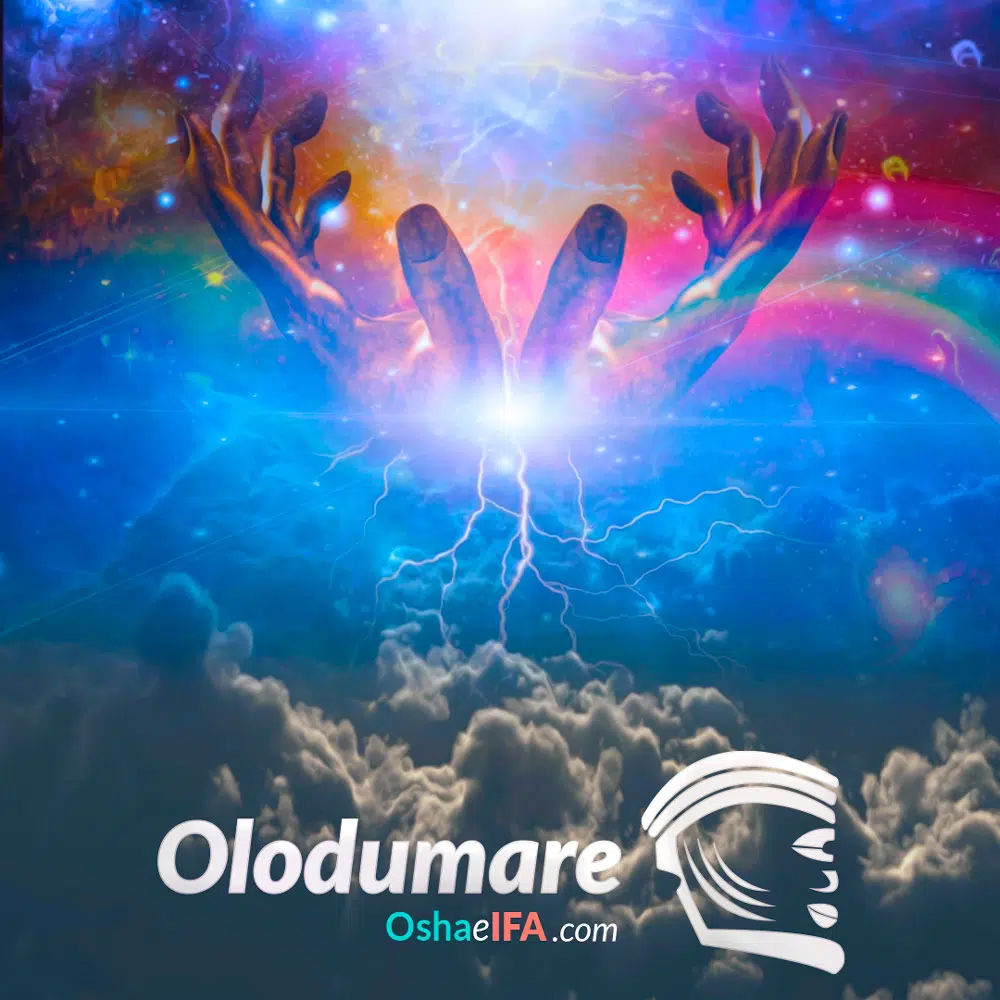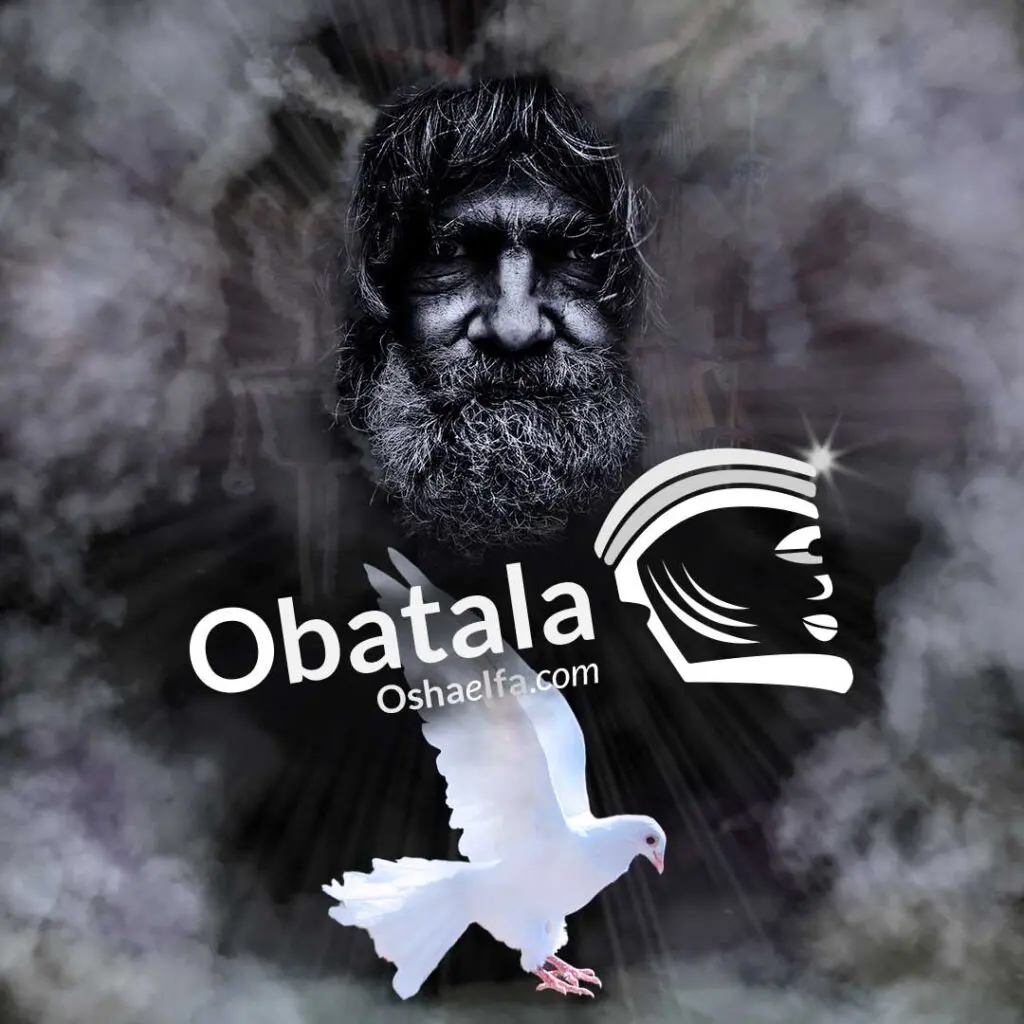Yemaya: Orisha of the Sea and mother of the World
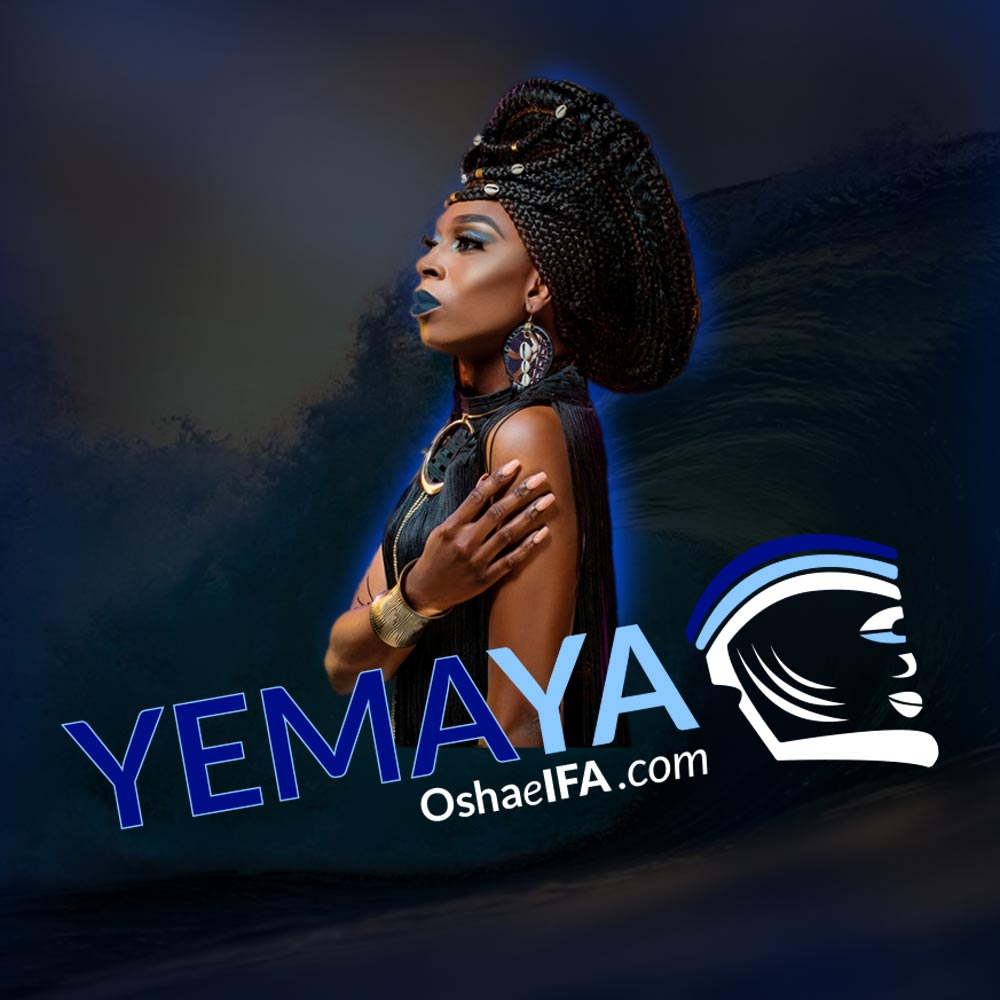
The worship of the Orisha Yemaya stems from the traditions of the Yoruba Nation. Initially located southwest of Nigeria, Africa. Their practices have a complex religious system that has spread through the Yoruba diaspora, originally caused by the colonization of their territories, which gave rise to the practice known as the Osha-Ifá Rule (also popularly called, Santeria) in the American continent.
Within Santeria, Yemaya is an Orisha (deity) whose symbolism reveals great importance during creation. She is the earthly expression of the uterine principle, or feminine genitor, thanks to which life originates. One of her fundamental symbols are her "her breasts", considered icons of the abundance that emanates from the Orisha, in all senses of existence.
Through her breasts, Yemaya represents the nutrition process that, in addition to fostering a primordial connection that links the child with the mother, is also related to the energy exchange that human beings carry out with mother earth, through breastfeeding.
This shows that Yemaya, like the Orishas Oshun, and even Oya, have a deep relationship with ancestral mothers and, therefore, with everything related to motherhood. Ifa Orilana Aworeni Odumola Sowunmi manifests in his book The nature of the Orisas, than:
«Yemaya is an Ebora who possesses the mysteries of Oduwa, because she is a Gelefun manifestation» (p.182).
This means that it has a segment of the cosmic and earthly energy that emanates from the contraction, because it is the active principle of the feminine character and of the ancestral mothers. Therefore, its priestesses are highly valued to be part of the Gelede community (a secret sect that jealously guards the mystery of the ancestral mothers, which is linked to the cult of the Iyami Oshoronga).
Now, the importance of Yemaya as "Mother of all, or Mother of all Orishas" is a concept that fully materialized during the diaspora and the establishment of the rules of Osha in Cuba and that responds immediately Who is Yemaya? Obviously, its natural identity is related to motherhood for the reasons that have been previously exposed, that is, for the original Yoruba, there is no doubt of its relevance with respect to the gestation process, or the nutrition process that allows absorbing the elements. that the land provides for subsistence.
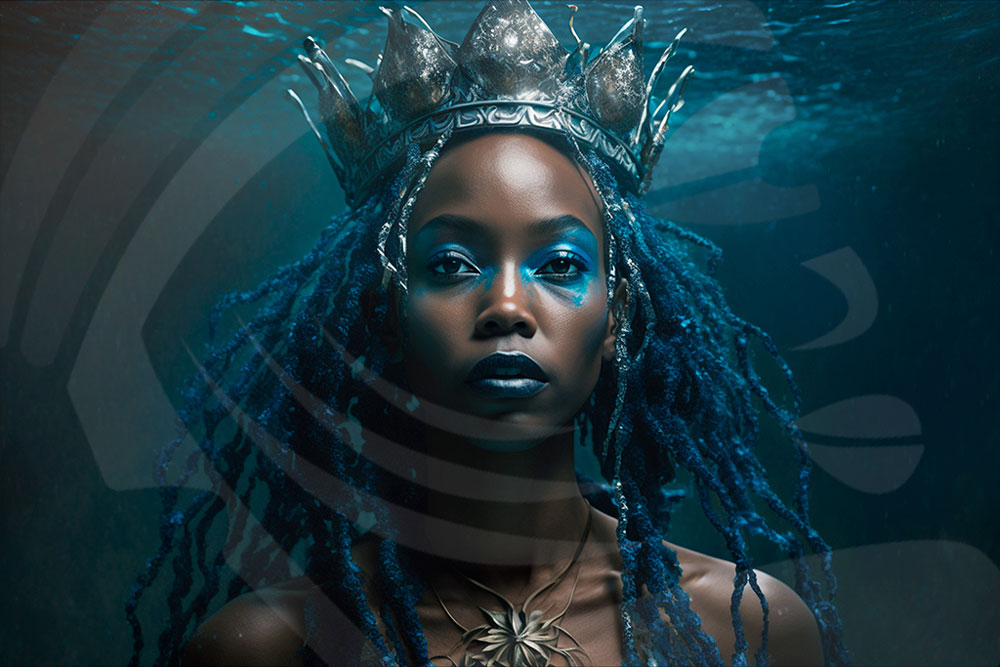
This even explains why the dead are buried. From this perspective, burying the deceased in the ground, and their decomposition, is about giving back what has been received in the cycle of life, returning it to nature or the universe.
Another fundamental element in his cult is the relationship he has with the waters. In fact, both the link with them, as well as his work in maternity, are reflected in his name, which could be broken down as: «Yeye Omo Eja» which means: mother of fish.
«Yémòyá, is the Yorubá demigoddess of creation and abundance, related to the nutrition of the child and the wealth of the adult... The name Yémòyá arises from the contraction of the names ‹Yeye òmò ejá› Mother of the Fish children. The interpretation of her name is related to the towns that settle on the banks of a river, throws us a socio-cultural element of towns dependent on the bonanza of a river in their survival system ». (p. 181).
(Ifa Orilana Aworeni Odumola Sowunmi. The nature of the Orisas. 2009).
In Nigeria, the interpretation of its name and its relationship with the fish, does not refer to motherhood as a unique element, it is also linked to its role as a basic source of social and economic development within the communities established on the banks of the rivers. , whose fishing activity allows their subsistence. Therefore, Yemaya is a symbol of survival and life.
Particularly, for the Egbas, inhabitants of the city Abeokutá, worshipers by nature of Yemaya, she was seen as the direct link that connected them with Olodumare (God), occupying a predominant place over any other deity.
At the time of colonization, the geographical location of Abeokuta (one of the cities closest to the sea) favored the slave trade taking an immense number of Egbas as captives, who, upon arriving in America, ended up adapting to the fusion of the cults coming from various regions of the Yoruba confederation, but maintained the influence of their most essential beliefs, the Orisha Yemaya being then recognized by the diaspora, for her character as mother, fecundator, and symbol of life.
In Cuba, it is considered that this Orisha was granted dominance over the surface of the seas, but, due to her impetuous and violent character, she lost the hegemony of the world, for which reason, the constant movement of the waves of the sea represents his character and personality. Together with Olokun, it is the root of all possibilities and all divine manifestations, and they share the mysteries of the deep waters. In addition, she is the source of all wealth in the company of her sister Oshun.
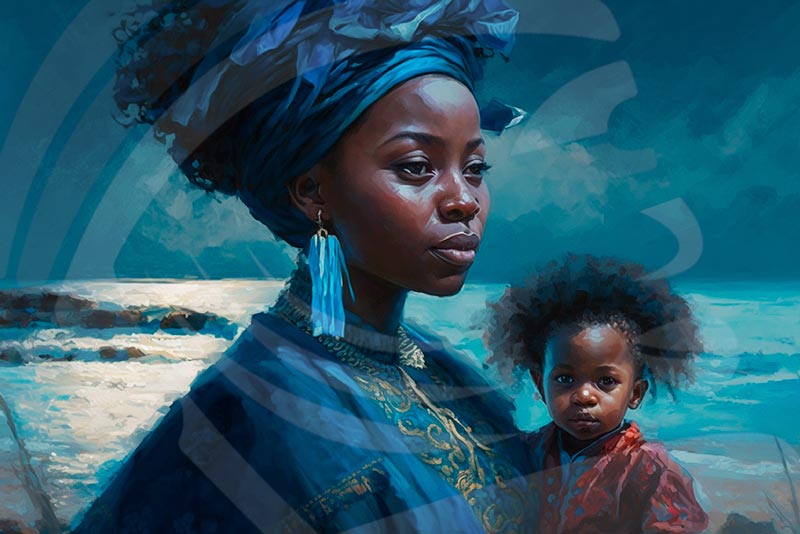
Also, she is identified as Shango's sentimental mother. She was the first woman of Orunmila from whom she stole the secret of working with the opele, being forced by Olofin to remain guessing with the eridiloggun (the snail) for that action. In her different avatars, she is also the wife of Orisha Oko, Babalú Ayé, Agayú and Oggún.
It symbolizes perfection, industriousness, subordinate occupations, the sea, its mysteries, the depths of the ocean, service, health, efficiency, and domestic animals.
So you could say that Yemaya's central role in Santeria lies in the creation of the human being, because it has direct participation in the phenomenon of life. We know that all forms of life have their origin in the sea, in addition, it is the owner of the amniotic fluid where human embryos are submerged during the gestation process. This is another reason why she is called the Mother of all fish, because just as they live in water, human beings live like fish at the beginning of their life.
«The development of life on this planet was a consequence of water on earth. Both Ifa and science agree that all life forms on earth evolved from the ocean. Yemaya as Goddess of fresh water and Goddess of salt water represents the primitive mother who gives birth to all living beings. (p.14).
(Awo Falokun Fatunmbi. Ifa and the Spirit of the Ocean. 1993).
Origins and history
In Nigeria, Yemaya is estimated to have a deep link to the Ogun River. This allows you to make a pilgrimage through different Yoruba lands, since this river crosses many of them. That is why, there are different ways for your worship.
«Yorubá historians say that their original cult arises in the lands of NUPE, to the north of Ijesa, in the lands of Erínlé... Wars with neighboring towns cause a transfer of the Egbà towns to the south, settling on the banks of the Ogún river, on one side of Okere Hill, of which a large stone bears the name "Abeokuta." (p.182).
Ifa Orilana Aworeni Odumola Sowunmi. The nature of the Orisas. 2009
Therefore, it is estimated that her cult comes from Abeokuta land, being very widespread in Egbado land, where she is also known as: Okoto or Obsa. It is also related to the Takua land, because it is there where the Oggun river is born. In the land of Oyo, she is known as a virtuous deity of commerce.
In the city of Shaki she is called Somu Gaga (the one with the huge tits), she is considered the wife of Okefe, which is the royal title with which Orisha Oko is recognized, being in that place where the story in which she is insulted is born for this Orisha, and due to the embarrassment suffered, he submerges in the river and goes to live with Olokun, keeping that name. Other names by which Yemaya is known are: Agana, Asesu, Okute, Awoyo, Mayelewo, Achabá, among others; these may vary according to the place of her worship, or the path to which reference is made.
Distinctive features of Yemaya
To understand How is Yemaya? it is necessary to analyze its character as a fundamental and distinctive part of its essence. He has a deep and changeable temperament, which makes it very difficult to guess his intentions and desires. However, she is a virtuous and wise mother. She is sometimes very cheerful and scandalous. She likes to hunt, swim, handle metal weapons like daggers and machetes. She is indomitable and cunning. She wears seven blue and white skirts, wears silver and coral jewelry. She represents intelligence, rationality and is a very skilled sorceress, she owns magic powders.
Her strong and often brave character makes her an indomitable and cunning woman, but also a virtuous mother; She uses a skirt in the same way that she can wear pants, just like any other man, even behaving in the same way and equaling her strength. On some occasions she can dress as a mariwo and griffin chicken feathers (especially when she is Okute).
«The ability of water to erode even the strongest stone and metal (except lead) is represented in the stories of the warrior facets of Yemayá. As the goddess of water, Yemaya demonstrates the relentless and unwavering determination to seek out the smallest crack in an enemy's armor and focus on it, until it is destroyed." (p.69).
Orisha, Goddess, and Queen of the Sea. Raven Morgaine, 2021.
She is a witch who knows the magical arts, she likes to work with Ojuero and Babalu Aye, and she can live both in the sea and at the entrance of the forests, or in the thickness of the mountain. Her skills as a merchant made her a very skilled woman to acquire money, she is a hard worker, a food merchant, with knowledge in fabric dyeing and the manufacture of melon seed oils.
About their symbols and rituals, these are used for a wide range of purposes, leaning, above all, to stimulate their beneficent energy on their most outstanding powers or, for the purification and spiritual cleansing of their followers. The colors, the bracelets, the tools, the music, the dance and the songs, are basic elements in the Yemaya rituals, through which a harmonious and deep connection with their energy is established.

Its most representative color is blue. in all its shades. Yemaya's relationship with this color, in addition to the obvious link with her power over the waters of the sea, goes much further. In fact, the color blue is the most spiritual of all the colors that make up the rainbow spectrum. Its vibration reflects the essential virtues of this Orisha, such as: calm, protection, hope, happiness, intuition and spiritual balance. On the other hand, to a lesser extent, this saint can be related to the white or translucent color that symbolizes the foam of the sea.
Thus, Yemaya's necklace is made with transparent beads that are alternated 7 by 7, with others of different shades of blue. They can also carry white beads, and some red, orange, green, or pale pink glories (depending on the path).

The ilde (bracelets) of Yemaya They are usually made with beads of their characteristic colors, with the blue color predominating as always. In addition to this, among her favorite jewels, the white metal bracelet stands out, which is usually made of silver and used in groups of 7. These are placed on the tips of her crown, and also used by the daughters of that Orisha in her hand. left, especially during iyaworaje. Oshun and Oya's daughters also use Yemaya's 7 bracelets, but they usually wear them on their right hand.
Among your toolsIt has 7 silver bracelets, a crescent moon, an anchor, a key, a sun, a pair of oars and a rudder. These objects are made of silver, steel, tin or lead. He likes snails, sea shells and agbebe (fans) made of guano leaves decorated with mother-of-pearl, gold, beads and shells. He wears a beautifully decorated cloak. A rattle or güira that is used to greet her and to make her pay attention when spoken to.

The Orisha Yemaya tureen is a blue painted vessel that can be decorated with seashells, silver ornaments, boats, fish, nets and all kinds of allegorical figures of the sea.
An element that is also of great importance in the execution of liturgical practices are the herbs that are used in the ceremonies and works of Yemaya, among which we can find: the cockroach, water flower, purslane, taro, witch grass, cilantro, jagua, cress, clover, nightshade, alligator grass, mint, violet, sargasso verbena, juniper, aloe vera, rosemary, reseda, verraco stick, syringe stick or teken teke, pig stick, water melon, mata negro, mangrove, malanga, majagua, maguey, sea flax, lettuce, sea reed, lucentio de playa, guácima, guama hedionda, guano from the coast, grenguere , gereciana de la tierra, freshness, chichana, cachote, culantro, opalillo de monte, come cara, cajumbo, carguesa, cañamaza, cañacoso, shrimp, camagüira, caisimón, bejuco ubi, bejuco tortoise, bejuco parra, bejuco jañateo, bejuco crab, corral vine, indigo, purple basil, sweet chili.
«…the herbs associated with Yemayá share certain essential uses in common. They are typically found in many recipes and formulas for fertility, harmony, peace, protection, rebirth, and cleansing." (p.141).
Morgaine Raven. Orisha, Goddess, and Queen of the Sea. 2021.
His number is 7 and all its multiples. In the diloggún he speaks through the Odu Oddi (7). The number 7, like Yemaya, is a symbol of spiritual protection. Its vibration is very high, which is why it benefits emotional processes, encourages feelings of love, respect, wisdom, intuition and is loaded with great mysticism. It is believed that this digit has healing properties that favor the body and the love. In addition, it attracts prosperity and good fortune.
His day of the week is Sunday and its annual celebration according to the Osha rule or Afro-Cuban Satería takes place on September 7, motivated by its syncretism with the Virgin of Regla, belonging to the Catholic religion. In other countries of the American continent, believers in Umbandista practices, such as Brazil and Uruguay, celebrate their day on February 2.
Their celebrations within Afro-Caribbean customs are accompanied by parties enlivened to the rhythm of the drum. During these events, it is possible that a saint's horse incorporates the spirituality of this Orisha.
His dance has very particular characteristics. «When going down to Earth» Yemaya laughs out loud, it spins like the waves, and spins like the whirlpools of the ocean. On other occasions, she swims to the rhythm of swimming or performs a dive to remove snails, algae and fish for her children. Her dance begins with soft undulations like slowly agitated waters animated by the breeze and then increases in intensity like the rough sea. Among the drumbeats to Yemaya, the following stand out:
- Akuakua (Zapateo).
- Alaro.
- Baby.
- Chachálokpafun.
- Iyesá
As for the the songs to YemayaIn the Yoruba religion, they are known as "orin or iyere", and they act as a sacred link through which it is possible to communicate and connect with the divine essence and spirituality of the Orishas. This means that each song to this deity is more than a simple melody, it is a harmonious manifestation that stimulates the presence and influence of Yemaya in the lives of his followers.
Yemaya's songs express the gratitude and reverence of the devotees who seek her guidance and protection, but, in addition to that, they play a fundamental role in the rituals and ceremonies of this Orisha. An example of those songs is the following:
Akele Wuamimo Tumbao
Yemaya Aboyomo Tumbao
Akele Wuamimo Tumbao
Emoyan Aboyomo Tumbao
Akele Umbo Lokualokua
Yemoya Aboyomo Tumbao
Akele Umbo Lokualode
Yemaya Aboyomo Tumbao
Akele Yemoya Umbo Lade
Aboyo Yemoya Umbo Lade Aboyo
Inle Inle Bank
Aboyo Yemoya Umbo Lade Aboyo
Yemoya Umbo Lade
You can read: Paths of Yemaya: The multiple manifestations of the Orisha of the Sea
Pataki, Myths and Legends of Yemaya
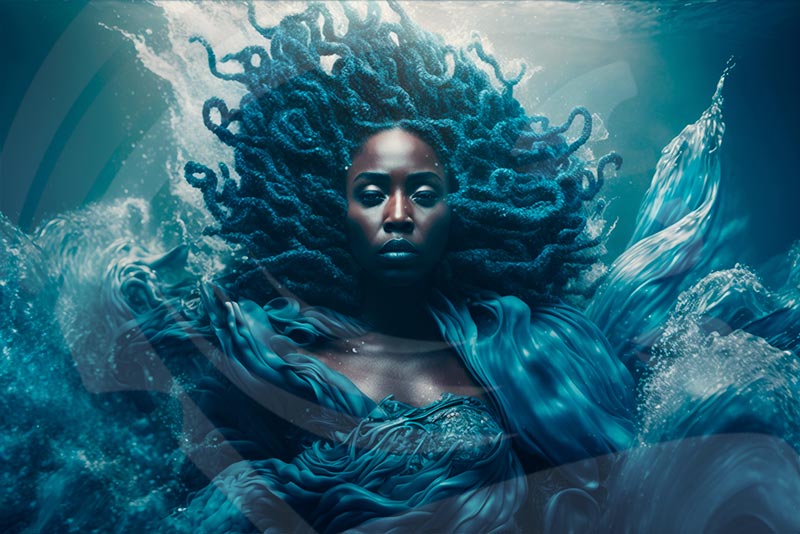
In the Yoruba culture, there are certain elements that could be considered the fundamental basis of its essence. An example of them are their stories or myths that act as a kind of orientation of the collective subconscious, towards the search for meaning in human existence.
Within the Yoruba religion, these myths are of a fundamental nature for the guidance and understanding of the advice and teachings of the Orishas. All of them are contained in the Odu of Ifa and are identified as "Pàtàkì or Ese de Ifa".
Each contains a collection of cultural symbols, which are the basis of the enduring truths of their society, whose role is indispensable in the construction of their reality. In this sense, Adrian de Sousa (2005), in his book The Orishas in Africa. An approach to our identity, notes that:
«In each odu of Ifá there is implicit wisdom, understanding and universal thought of thousands of years, through proverbs, songs, spells, predictions, sacrifices and myths. In their narrations, the odu transmit life experiences as they are, with good and bad behaviors, attitudes and decisions, because through their symbols there is always a moralizing intention for the Yoruba man" (p. 4).
In consecuense, each Orisha is accompanied by an Ifa sign upon arrival on Earth, called Odu isalaye, the one of Yemaya is Iwori Meyi. The treaty of that sign explains how Yemaya managed to reach a position of relevance in this world, and its story tells that, when a new year was about to begin, at the beginning of time, Olofin called all the Orishas to establish which of them would rule. to the world at that time.
Yemaya, who had always been very wise, before going to the meeting, went to consult with Orunmila through the Ifa oracle, who after making divination seeing this Odu, told her that she should make sacrifice with: a ram, two roosters , sea sand and the other basic ingredients of the ebo. At the end, she had to bring the head of the ram to the meeting, so that her aspirations would give good results. She followed to the letter all the advice that was given to her.
When all the saints were gathered before Olofin, each one of them wanted to be chosen as regent of the Earth, Olofin at the beginning of his speech told them: "I see that all of you have come from far away, now, have any of you brought something for the meeting?" Yemaya immediately stated that she had brought the head of a ram, being the only one to present an offering for such an event.
Olofin realizing that sentenced: «Yemaya, you brought a head and, therefore, head you will be. They were going Eshu». In this way, Yemaya came down to earth with great power, being in those times the one who ruled the world.
Yemaya and Obatala
According to Afro-Cuban beliefs, it is believed that Yemaya was born with the moon, just as Obatala was born with the sun. Yemaya is identified as a deity as old as Obatala, and just as powerful, as stated by Roman Raygoza, in his book Yemaya Mother of All:
«Unstoppable in their punishments, they always bear the stamp of justice. His word is as sacred as that of Obbatalá himself» (P.4).
It happened that Obatala and Yemaya lived together, but they felt alone because their children were scattered throughout the world and that made them very sad. On his part, the monkey that was the son of Obatala was not considered by anyone and was going through the world suffering hardship, Obatala, knowing that, was very worried, and took him to his house to live with them.
Little by little the monkey gained the trust and love of Obatala and Yemaya, being very pampered by both Orishas. They showered him with gifts, clothing, so much so that he looked like a person, always walking very well groomed. He attended to the visitors that arrived and everyone began to respect him.
Like any member of the family, the monkey had his seat at the table, becoming increasingly important and changing his way of thinking, filling himself with vanity, until he came to think that, without him, Yemaya and Obatala were nobody.
One day, while everyone was sitting at the table, Obatala asked the monkey to bring him the bread, responding that he should take it himself because when the Kings ate they could not be disturbed. Surprised Obatala reprimanded him, but the monkey without hesitation answered disrespecting Baba.
After that incident, Obatala left the table very upset, a moment that the monkey took advantage of to pounce on Yemaya trying to make official trupon with her. Yemaya, in defense of her, hit the monkey on the head with a chain that she had, taking it from above.
Immediately, Yemaya went to Orunmila's house who made divination for him seeing the Odu Osa Odi, and told him: "He who was born to be a monkey, is a monkey, and stays a monkey." Then, he prepared the chain for Yemaya, recommending that he give it to Obatala, that they sit at the table with the monkey again and offer him to drink until he was drunk, when he was very drunk they should put the chain on him and lock him up, because the best thing was avoid a confrontation with him, because even though they would always beat him, if he bit them their blood would get sick.
They followed all the recommendations of Ifa, seizing the monkey with the chain around his neck and turning him into a slave, locked behind bars and subjected to the ridicule of everyone who saw him. In this way, the monkey lost his power and returned to being what he was before, for not knowing how to thank Obatala and Yemaya for the help they gave him.
The link between Yemaya and Oshun

These Orishas have a very deep and close relationship. Both are related to conception, in fact, there are many works that women usually do at the foot of Yemaya and Oshun to get pregnant or protect the gestation process. However, there is a marked difference in that sense, since the maternal principle corresponds expressly to Yemaya.
«Ochún is not like Yemayá, 'the madraza', – the principle of motherhood – that her children and devotees describe to us: Ochún, together with her sister the great progenitor goddess, is the lover, the personification of sensuality and love, of the force that drives the gods and all creatures to seek each other and unite in pleasure» (p.89).
Lydia Cabrera. Yemayá and Ochún (Kariocha, Iyalorichas and Olorichas). Universal Editions. 1974.
It happened that every time Oshun had a child, she went to Yemaya's house and left him under her care to be able to walk around the world. Yemaya received them and raised them, but Oshun did not appear again until she had another child to leave him one more time, and so he repeated it several times, without even going to visit them.
Elegua, who always knew everything, noticed that Oshun was passing in front of Yemaya's house in disguise and told her without hesitation. Yemaya very upset, she stopped at the door of her house to try to identify her.
So, Oshun once again walked past Yemaya disguised as usual, but she called her name. Yemaya warned him that from that day on he would not tolerate one more of her faults and that he could not complain about her when she was deceived by her. Oshun, very surprised, asked him, how had he recognized her? But she, full of shame, apologized to her sister, promising her that from that moment on she would not continue committing such mistakes.
Syncretism: Yemaya and the Virgin of Regla
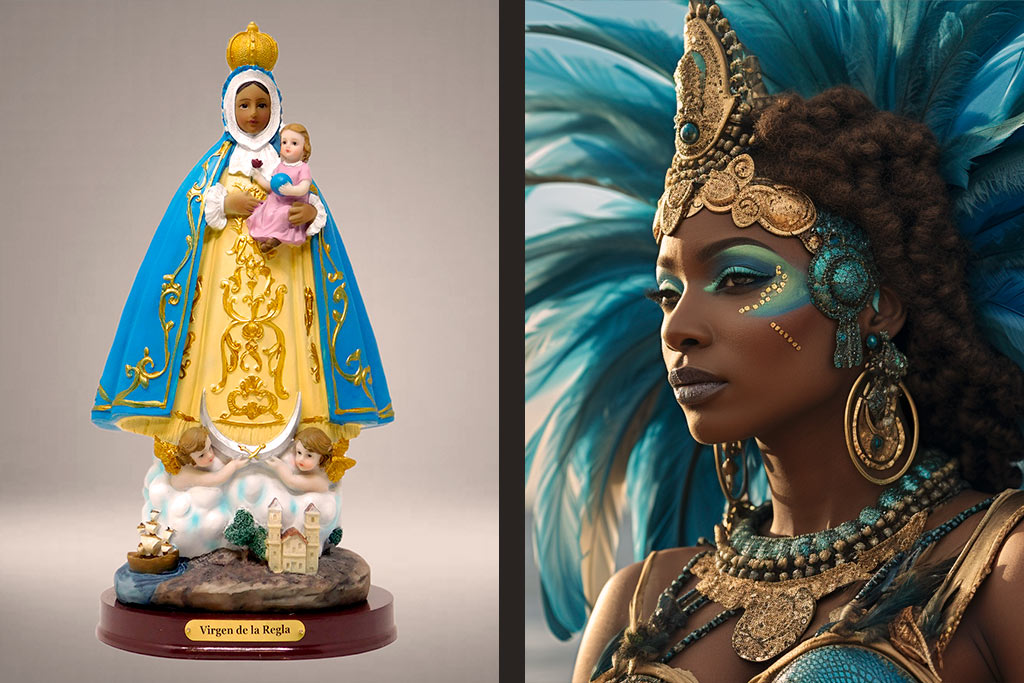
Yemaya in the Catholic religion, is syncretized with the Virgin of Regla, also known as "the Virgin sailor". The legend tells of the Virgin of Regla that, when a group of bandits arrived in the city of Hippo, the disciples of Saint Augustine, who was the bishop of said African city, fled in a boat terrified with the image of a Virgin on their shoulders. hands. According to tradition, the image is believed to date from the year 300 AD
Those marine waters led those men of faith to the shore of the Chipiona promontory, where they founded a monastery on the remains of some ancient construction. But, that was not the only vicissitude that the image of the Virgin had to pass through, when the Arabs arrived in 713, the prior Simón hid it in a well under a fig tree in the vicinity together with the utensils for giving mass.
In 1.330 a canon of the Cathedral of León, which was crossing the peninsula, sitting under a fig tree had a vision that told him where the image of the Virgin was hidden for 617 years. Upon finding her, in that place over time she became patron of the men of the sea. He is credited with abundant miraculous events and cures.
Due to its location, right at the mouth of the Guadalquivir, the ships that went back and forth to America paid tribute to the Virgin, since her sanctuary was the last thing they saw before going out into the open sea.
In Cuba, in the town of Guaicanamar, whose meaning is "in front of the sea", a hermitage was built where an image of the Virgin of Regla from Spain was placed, brought from the hands of Sergeant Major Pedro de Aranda, being the object of much devotion ever since. Granting her name to the village of Regla, recognizing her as her patron saint on December 23, 1714. Regla is a municipality of Havana with more than three centuries of existence.
Its symbology of great parity with Yemaya is evident, both are recognized in Cuba as protectors of sailors and are closely related to multiple aquatic stories. Her blue clothing and the virgin's black complexion, being carved in a wood with that hue, allowed the Yoruba to syncretize them very naturally. The veneration that Cubans feel for both, or for only one in itself, is as incalculable and deep, as its ancient and amazing history.
prayers special greetings
Within the Yoruba religion, there are different types of bows and invocations with which the presence of the Orishas is requested, among them we have: greetings and prayers. The greeting of this deity is "Omío Yemaya" and its meaning evokes a deep respect, which stimulates a connection with the divine energy of this Orisha. It is a special compliment to the mother of the waters, exalting her power as protector of motherhood and the ocean, and a recognition of her influence in the lives of her children.
Regarding the prayers, originally called "Oríkì", their importance is decisive for the initiates and practitioners of the Osha and Ifa rule, since they constitute a communication bridge between the earthly and the spiritual world, with which attracts the blessing, guidance, and ancestral wisdom that Yemaya emanates, in favor of those who request their help. Next, we offer a traditional prayer of Yemaya, very effective:
(I pray to Yemaya praising the Spirit of the Mother of Fishing)
Agbe ni igbe 're ki Yemoja Ibikeji odo. Aluko ni igbe 're k'lose, ibikeji odo.
The bird receives its good fortune from Yemoja, the Goddess of the Sea. The Aluko bird receives its good fortune from the Spirit of the Albufera, the helper of the Goddess of the Sea.
Ogbo hate i igbe're k'oniwo. Omo at'Orun gbe 'gba aje ka'ri w'aiye.
The parrot brings good fortune to the chief of Iwo. Children are the ones who bring good fortune from Heaven to Earth.
Olugbe-rere ko, Olugbe-rere ko, Olugbe-rere ko. Gne rere ko ni olu-gbe-rere. Roast.
It is the Almighty who gives good things, it is the Almighty who gives good things, it is the Almighty who gives good things. Give me good things Almighty God, because you are the one who gives good things. Asé.
The devotion to Yemaya
The devotees and followers of this Orisha maintain that, Yemaya is asked your help and intervention in matters related to diseases related to the womb. Women who want to get pregnant come to her regularly. She is usually very effective in cases where there are wars of witchcraft and problems with spirits. She is a deity who fights very well against enemies, especially if it is her children. She is relentless, and she does not forgive her faults.
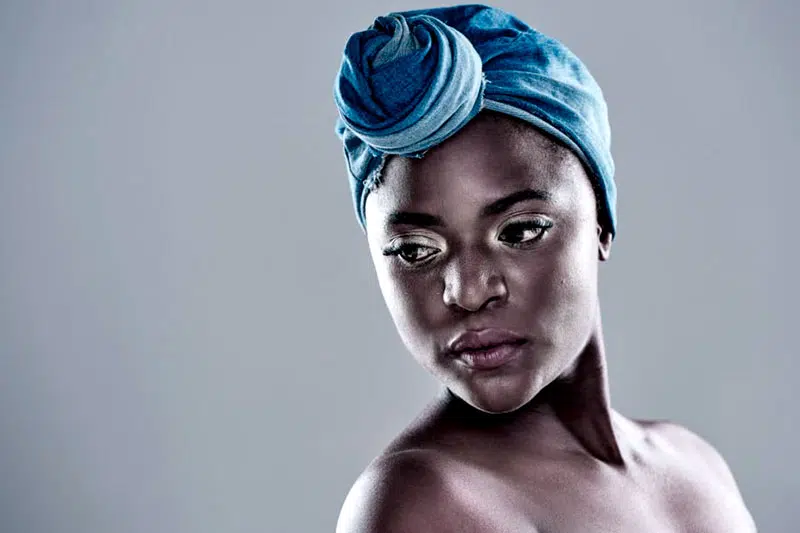
As the meaning and importance of the cult of Yemaya is studied, it becomes more evident to conclude that she is the energy that grants blessings to human beings to achieve their production and survival. It influences in a beneficial way the man who works in the fields, in the sea, and in any task that is provided to get his livelihood, because he is the mother who watches that his children do not lack food, that way they can continue their labors with strength and without pain or suffering.
The way in which the worship of this Orisha has transcended in America enjoys such a force that it is very impressive. In many places in America she is recognized as the goddess of the seas and in most of them, she is even revered, turning her worship into a social and cultural phenomenon that involves locals and others.
An example of this is the annual festival carried out in the customs of Candomblé and Umbanda, which are two Afro-Brazilian religions, where the cult of Yemaya prevailed, becoming the most popular deity in Brazil that also has the annual celebration most important in the country.
Every February 2 in Rio Vermelhoa, countless people gather to offer baskets of flowers, clothes, food, boats and perfumes, along the beaches of the area, bringing together devotees and tourists from many parts of the world. , who come to entertain and ask for the blessings of their spirituality. As you can see, this is just a small sample of the ability that this Orisha has to adapt and be identified by her children throughout the world.
«... all cultures say that, since water irrigated the earth, all life has been able to germinate, grow and sustain itself. The Yoruba diaspora also continues to tell it that way…”
Gutiérrez, Mariela A. Lydia Cabrera and her Yemaya and Ochún, an incomparable fluvial compendium of Afro-Cuban mythology.2004.
References and Suggested Reading
- Ifá eagle. (2015). Leonel Gamez Osheniwo. Teachings of a Friend, a Brother, a Teacher. Eagle of Ifá Foundation.
- Awo Falokun Fatunmbi. (1993). Ifa and the Spirit of the Ocean. Original Publications.
- Cabrera, Lydia. (1974). Yemayá and Ochún (Kariocha, Iyalorichas and Olorichas). Universal Editions.
- De Sousa Hernandez, Adrian. (2005). The Orishas in Africa. An approach to our identity. Editorial of Social Sciences.
- Gutierrez, Mariela A. (2004). Lydia Cabrera and hers Yemayá y Ochún, an incomparable fluvial compendium of Afro-Cuban mythology. Inti: Hispanic Literature Magazine: No. 59, Article 19.
- Ifa Orilana Aworeni Odumola Sowunmi. (2009). The nature of the Orisas. Rosebud Editions.
- Morgaine Raven. (2021). Orisha, Goddess, and Queen of the Sea. Weiser Books.
- Raygoza, Roman. (2016). Yemaya Mother of All. Group Pen mi AC
- Ocha'ni Lele. (2012). Sacrificial Ceremonies of Santeria: A Complete Guide to the Rituals and Practices. Destiny Books.

